Why I Won't Be Buying Boeing
With all the hoop-de-doo by the media obsessing over Boeing’s 737 MAX problems, we need to remember that nearly one-third of Boeing’s revenue comes from the defense, not the commercial, side of its business.
If you overlook this inconvenient fact, the bull case for buying Boeing (BA) is simple: Boeing and Airbus SE (EADSY) own a duopoly on commercial aviation. The barriers to entry are insurmountable for a new competitor unless it is funded by a sovereign government. (China may do just that…)
The backlog of orders for both BA and EADSY extends out for many years. If you are an airline that wants to switch manufacturers now, the queue is so long that, by switching, you will only wait even longer to see your aircraft. As with all monopolies and some duopolies, you are in the position described best by Stealers Wheel all the way back in 1973:
Clowns to the left of me, Jokers to the right, here I am, Stuck in the middle with you
Taxpayers Fund Commercial Aviation
While Boeing’s defense business might be less than 30% of revenues and “Where ya gonna go?” the customer wail on the commercial side of the business, we need to remember that it is the Defense Department, 100% funded by the American taxpayer, that has subsidized so much of the growth of commercial aviation. There is nothing wrong with the Department of Defense spending yielding benefits for corporations and investors, but it needs to be transparent and fair.
Case in point: In securing an order for 250 KC-135 tankers from the US Air Force in 1955, there was taxpayer funding for the military tanker. The plant itself, the research, the tooling, the wind testing, the flight testing, etc. laid the foundation upon which Boeing designed and built its first commercial jet aircraft - the 707. Rather than acknowledge the obvious physical similarities, Boeing claimed that “Every large jet aircraft today [ed – including their competitors] is a descendant of the B-47.”
(A good friend of mine, before he moved on as pilot-in-command of more recent aircraft over his long career, flew Boeing’s B-47. It was not the safest of aircraft but it certainly ushered in the age of Big Bad Jet Bombers. His assessment of flying all that power: “Sweet.”)
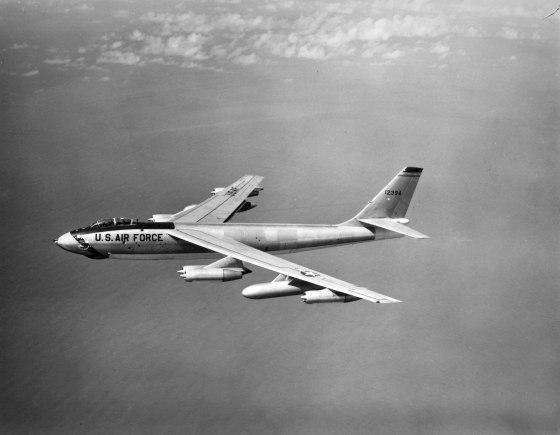
Source: WikiCommons
Regrettably, “Sweet” only lasted until the airplane began having serious structural problems, unlike many of Boeing’s aircraft in the leadup to and buildup of World War II, like this B-17 Flying Fortress.
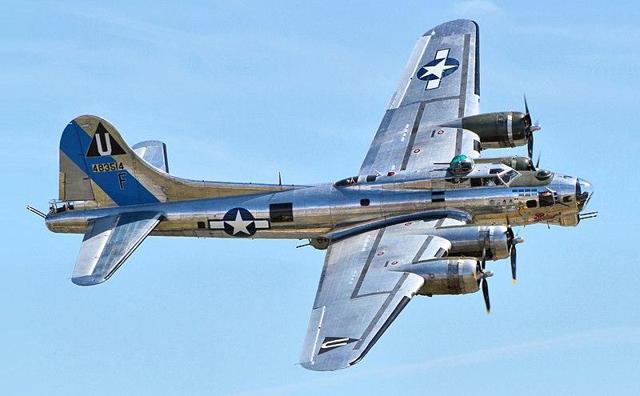
Source: Air wolfhound, Creative Commons
Determined to make it big in commercial aviation, Boeing’s president, William Allen, declared in 1953:
“We ... can build a test vehicle which will enable us to demonstrate to the military the principal characteristics of a combination tanker and jet transport and, at the same time, demonstrate to the airlines the principal characteristics of a production jet airliner. ...It will be a demonstrator model, the basic design of which will be adaptable to two production models: first, a versatile military airplane for aerial refueling of fast jet bombers and fighters, and for cargo and troop transportation fitted to the tempo of jet-age military tactics; second, a high-speed, economically operating airline transport for passengers and cargo aircraft.
“Designing, building and flying the B-47 Stratojet bomber and the new B-52 eight-jet Stratofortress heavy bomber have given Boeing an unparalleled background of experience. It has included, for example, 14,500 hours of jet wind-tunnel research and more than 5,000 hours of test and research flying.”
The result was the “Dash-80,” which actually benefited from more than 22,000 hours of Boeing wind tunnel testing and more than 11,000 hours of experimental and production test flying by Boeing crews.
There is certainly nothing wrong with smart management deciding to piggy-back on technologies, research and test flights garnered from a very similar aircraft. Indeed, at this point, I would likely have given them kudos for thinking through the implications of possible next steps for their KC-135 contract. Of course, back then they were not so arrogant as to believe it is their due to be compensated for developing ever more profitable aircraft. Each of us, as investors, need to decide if that has changed significantly in recent years.
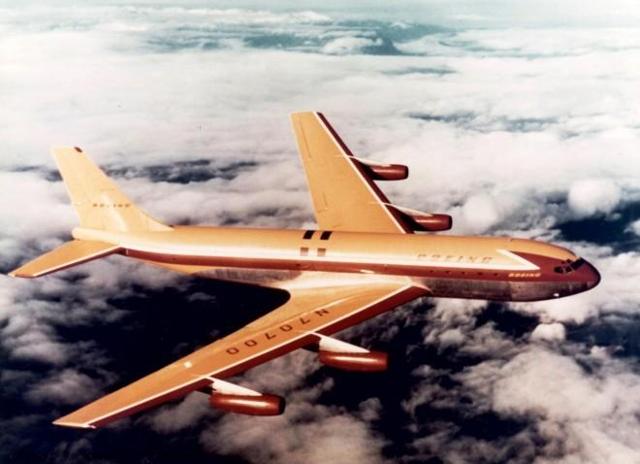
Source: Wired.com
Boeing promotional material: “1954: The Boeing 367-80 makes its first flight from Renton Field southeast of Seattle. The jet-powered airliner will become the Boeing 707 and usher in the jet age for passenger travel.”
"Become," heck. See the next photo!
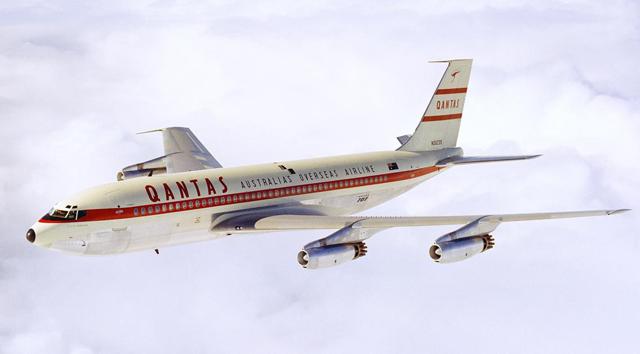
Source: Airlineratings.com – An early 707
Here is a recent iteration of the military version...
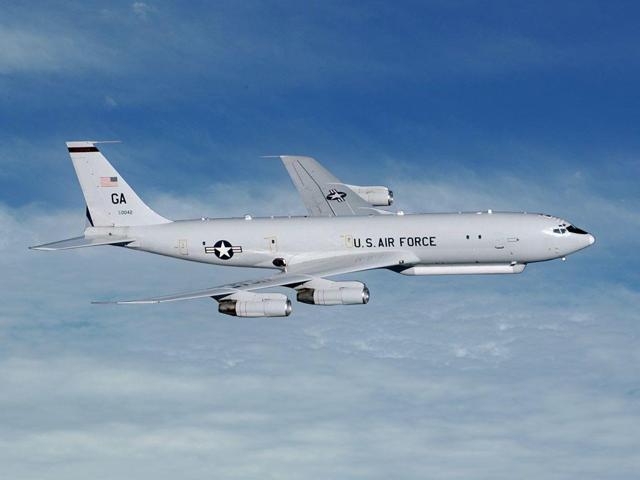
Source: USAF – more recent KC135 in JSTARS E8 configuration
Boeing and the US Defense Community Today
BA is the 2nd-largest military contractor, with ongoing contracts for Apache and Apache Longbow rotary-wing aircraft, F/A-18 Super Hornet fighter jets, Air Force One and its twin, and many others. Boeing has continued to receive some big contracts recently, like the MQ-25 Stingray, a drone tanker for the Navy designed to launch from a ship at sea and refuel jets such as the F/A-18 Super Hornet; the latest jet trainer aircraft for Air Force pilots; new helicopters, and more.
However, I think Boeing’s cleverness in using defense contracts as a springboard for civilian aviation may be in trouble, at least in the short term. Materiel Acquisition PMs – Project Managers – will always choose the safest path that still (allegedly) will fulfill the stated mission requirements. Promotions in this field do not come readily to the manager who advises buying a Peel P50 or Trabant when he could have had a steady, dependable Ford or Chevy for the same price. (No Corvettes or XKEs, either; we are all about ramp-up capability and safety here...)
In this case, many whistleblowers from Renton, Washington, to North Charleston, South Carolina, have claimed there is a “marketing and profits rule over engineering and safety” culture at the highest levels of corporate Boeing. Can this have infected the military side of Boeing as well? Whether those whistleblowers’ concerns are well-founded is yet to be determined. But there seem to be more and more of them coming forward, never a good sign.
There has been so much discussed, argued, parsed, claimed, counter-claimed, etc. about the 737 MAX that can be read elsewhere that I won’t bore my readers with a recitation of them all. I will simply say that, in my experience, there is never just one cockroach in the kitchen.
Enter the Pegasus
The second cockroach I see is a program as equally troubled as Boeing’s well-covered MAX problems. It is Boeing’s embarrassing and seemingly dismissive sub-par performance in delivering the newest-generation aerial refueling tanker to the Air Force, dubbed the KC-46 Pegasus.
This nation does not go to war without aerial refueling. Jet fighters, AWACs, bombers, transport, it doesn’t matter – all of them are thirsty, and with the United States’ foreign basing rights more in question than ever, the country desperately needs this aircraft to perform as advertised.
I would like to say that we need this aircraft to be delivered on time and within budget, but that train left the station long ago. It is already years behind schedule, and it looks like years more before it will be safe enough to enter into service and deploy to combat zones.
Some of the problems with the aircraft include a major malfunction with the (overly?) complex software inside the Remote Vision System. The RVS permits the in-flight boom operator to view the refueling system below the tanker.
Having performed this feat – poorly, but, hey! it was my first attempt – with a less high-tech boom on a KC-10, I can assure you, seeing the boom and the rest of the system is of rather paramount importance. (The pilot of the F-16 was quite patient, even encouraging me. He was relieved, however, when I handed the controls back to the Airman First Class who had done this a few hundred times. I shrugged, the pilot winked and, bam! just like that he was nowhere to be seen.)
The KC-46 also has had problems with how the boom connects and disconnects from specific aircraft, like F-16s and A-10s. In short, it is way too stiff and needs to be redesigned to be more flexible. Pilots of these lighter receiving aircraft report they need to use more power to move the boom forward and to disconnect. This could lead to severe damage to the boom or the aircraft. If the former, there goes the gas station and there goes air supremacy.
In a “Seriously?” moment, I read in my Defense News that the Air Force has awarded Boeing Co. a new $55 million contract to fix the refueling boom. I am certain the original specs called for refueling F-16s and A10s. Why is the taxpayer paying to fix this?
In addition, KC-46 deliveries have also been halted or delayed many times as a result of the Air Force maintainers discovering FOD - foreign object debris like soda cans, trash, tools, nuts and bolts, and other miscellaneous items — scattered inside the aircraft and possibly within the wiring. That may not be a problem in your car, but in an aircraft loose objects can cause serious damage. Who the heck at Boeing is doing Quality Control before delivering these aircraft? Or is this the way in which disgruntled employees vent their frustration? And if so, why are they frustrated?
Five years ago, then-CEO Jim McNerney said the cost overrun to fix what he seemed to dismiss as easy fixes for the KC-46 was $271 million. Never mind that the Air Force, even then, put the figure at closer to $800 million.
Part of the problem is that the KC-46 is basically derived from the Boeing 767, with the company either (depending on your viewpoint) cutting corners or borrowing from known technology. 80% of the 15.8 million lines of code is supposed to come from existing software. Yet, well over 1000 software problems determined to be "urgent" or "high-priority" continue to plague the Pegasus.
I could continue down the path of categorizing Boeing’s seemingly cavalier attitude about delivering aircraft per the contract specifications. I also recognize there are two sides to every story and may well hear the other side from Boeing’s ever-alert PR firm that monitors articles like these. I understand that the highly technical knowledge that is required to run today’s fly-by-digital aircraft requires patience and fine-tuning. So I will give just one more example before stating my conclusion. This one could not be more low-tech.
The unsung but brilliant Air Force Loadmasters take pride in ensuring the safety of all aboard. While the primary mission of the KC-46 is aerial refueling, it is a multi-mission aircraft. It can also carry cargo and passengers, transport troops, or be used as an airborne aeromedical evacuation center.
Loadmasters discovered, back in September, that about the lowest-tech piece of the aircraft, the mechanical cargo locks on the bottom of the deck of the aircraft became unlocked all by themselves. Can you imagine a bay part-filled with non-ambulatory medical patients suddenly seeing a tank or Stryker coming loose from its moorings in their direction? This one was fixed on the affected aircraft by the first of the year but the design flaw that allowed it must now be substituted with a retrofit for the entire fleet.
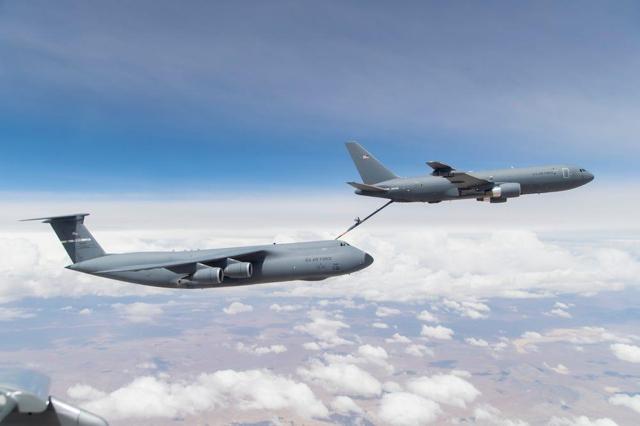
A KC-46A Pegasus during testing with a C-5M Super Galaxy for the first time on April 29, 2019. Air Force photo by Christian Turner
Conclusion
There is never just one cockroach in the kitchen. The 737- MAX mess might be seen as an overzealous emphasis on getting product out the door, though apparently Boeing’s own engineers warned management that you don’t just sling a heavier engine on an airframe, then move it forward to deal with the weight and balance issues, then provide a software solution for the ensuing erratic flight characteristics.
I have no doubt that Boeing’s engineers are among the best and the brightest in the business.
But then I see that management was either asleep at the switch on the defense side of the business or just decided that DoD could wait for the nation’s refueling capabilities to be improved, per the contract, while they dealt with the potentially much more profitable commercial aviation fiasco.
Again, I am certain Boeing engineers, working hand in glove with the Air Force, can fix these issues. But still, Boeing management drags its feet on this critical program, taking 8 months after being advised of a problem to respond. Why?
Possibly because Boeing management knows that the alternative for the Air Force is to buy more KC-135s, the tanker that entered service 63 years ago, in 1957 made by, you will recall, Boeing. That is, regrettably, the fallback position for the nation right now. Of course, maintenance costs will soar and the number of hangar queens will definitely increase, to be used for parts.
The reason I won’t buy Boeing today is that I do not find the management team credible. They have mismanaged what are arguably two of their most critical projects. The first, the 737- MAX, will mean a massive hit to earnings unless they can solve it today. The second, the KC-46, may ultimately affect their bottom line every bit as much. If the Department of Defense decides Boeing is an undependable contractor, there is no dearth of competitors ready to offer their own solutions to the nation’s defense needs.
Is Boeing too big to manage? It should not be. There are bigger companies that do the job well. The company has a great portfolio and an impressive backlog, all topped off with the daily rumor that Warren Buffett is about to buy a sizable portion of the company. (Like he doesn’t have enough problems with airline company management?)
One day I believe Boeing will recover its former glory. Just not today.
Disclaimer: I do not know your personal financial situation, so this is not "personalized" investment advice. I encourage you to do your own due diligence on issues I discuss to see if they ...
more



#Boeing is down now because of of the 737 MAX crashes. But $BA is a great company overall and it will eventually rebound as the memory of those tragedies fade and new successes come to light. But it will take time...
Yes, like the success of Boeing′s new twin-engine 777X.